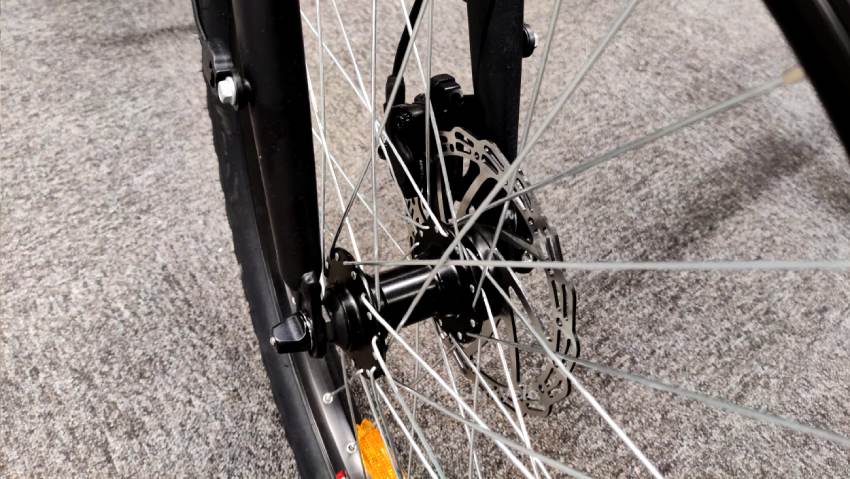Quick search
You are embarking on your search for the right electric bike, but first want more information on what to consider when comparing before making a purchase. In this article, we extensively discuss these points so you can gain a clear understanding.
Currently, there are so many different types of electric bikes with designs tailored to usage and users, that it can sometimes be a bit difficult to know what makes a good bike and what makes a bad one. Budget also plays a role here.
What does a good electric bike cost
You can find an electric bike for around 500 euros. This is the absolute basic quality and you might have bought it second-hand. From 1500 euros, we enter the lower price segment, with many entry-level models. These bikes are good, but without too many extras. The quality is basic and a part may break down faster.
As we move towards 2500 euros, we enter the higher price segment with strong brands and quality e-bikes. If you have more money to spare, you will find the best electric bikes between 4000 and 6000 euros, with some top models going towards 8000, 9000 or even 10,000 euros. These are often not ordinary electric bikes but special bikes like e-Mountainbikes or e-road bikes.
All quite expensive, which is why it’s important to know what to compare.
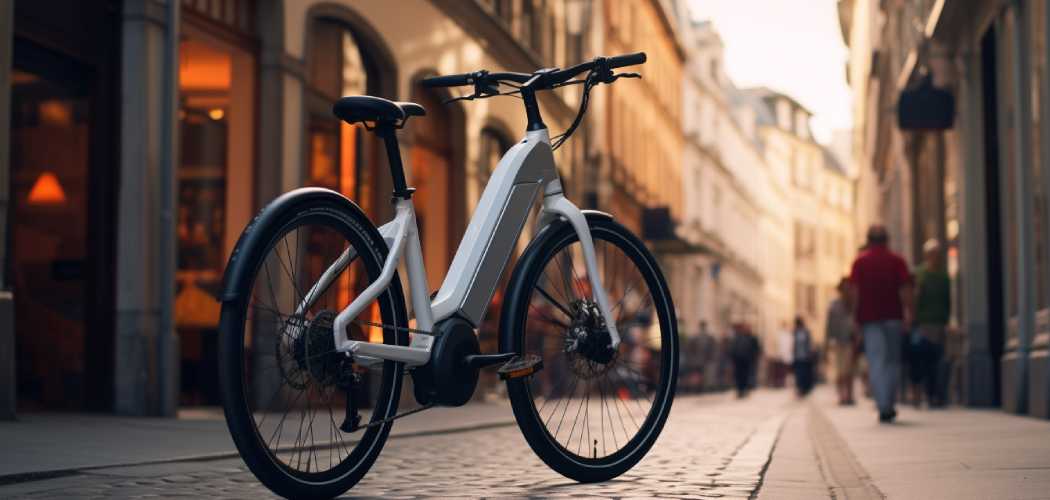
Electric Bikes, What to Consider
1. Choice of Electric Motor
Purchasing an electric bike often begins with determining the type of terrain you’ll be riding on. Is it mostly flat? Are there hills? Are there steep mountains? All of these factors influence the required power of the electric motor.
For an electric bike, the electric motor is typically limited to 250 watts, although it can deliver more power at peak times. Newton meters or Nm, the torque power, is also an important measure to gauge the strength.
Front, Mid, or Rear Wheel Motor
There are several types of electric motors used in electric bikes. Here are some of the most common types:
- Mid-Drive Motor: A mid-drive motor is positioned in the middle of the bike near the bottom bracket. This motor provides good balance and stability while riding and can also deliver better performance on hilly terrain. This type of motor is often used in high-end electric bikes.
- Rear Hub Motor: A rear hub motor is attached to the rear wheel of the bike. This type of motor is very powerful and offers good acceleration, making it ideal for longer distances at high speeds. It can also provide a smooth and comfortable riding experience.
- Front Hub Motor: A front hub motor is attached to the front wheel of the bike. This type of motor is less commonly used, although we are seeing more models opting for this configuration. It can cause some imbalance in the bike and affect the steering.
An electric bike typically uses a mid-drive motor. However, there are also full-fledged models with a front or rear hub motor. Depending on the type of motor, you can expect a different Newton meter of power.
For example, rear hub motors with 40 to 60 Nm accelerate just as quickly as their mid-drive counterpart with 85 Nm. In a front hub motor, you don’t want too much power to maintain control.
Different Brands, Models, and Quality
The brand of the motor can also be an important factor when choosing an electric bike. Some brands are known for their reliability and performance, while others may be less well-known or deliver less impressive performance.
Each brand also offers a wide range of models. Your choice depends on your route and how powerful your electric bike needs to be. Powerful electric motors are more expensive than those with less Nm.
For a city bike, 40 to 60 Nm is sufficient. If you’re going mountain biking or looking for a cargo, cargo bike, or longtail bike, you’ll want a powerful motor of 75 to 90 Nm.
Not only power is important. The number of sensors and the software in the motor also matter. The best brands feature speed, pedal, and rotation sensors. In poor-quality models, you’ll see only one sensor being used. These bikes are more dangerous than others.
Water resistance also plays a role. For example, we have the IP certificates. Bosch and Brose have an IP56 waterproof rating. Shimano has introduced its own certification and claims to be waterproof. Yamaha has not disclosed this information.
The Best Brands of Electric Bike Motors:
- Bosch and Shimano have built an excellent reputation for quality, reliability, and performance.
- Brose produces powerful, high-quality motors up to 90 Nm.
- Yamaha matches Bosch and Shimano in quality but has slightly less know-how.
- Fazua represents quality within an innovative design.
- Bafang is slightly less qualitative but still good and much less expensive. They are a good option for a lower budget and have a wide range of motors.
- Panasonic and AEG also have an electric motor these days.
- I also add the Belgian IntuEdrive here. They have not yet placed a motor on the electric bike, only on their speed pedelecs. But theoretically, this is possible.
Brands mainly differ in type, sensors, software, sound, display, modes. Usually, you don’t have a choice of brand or type of motor. You buy the motor and brand that comes with the bike. Important to know if you’re wondering which electric motor to choose.
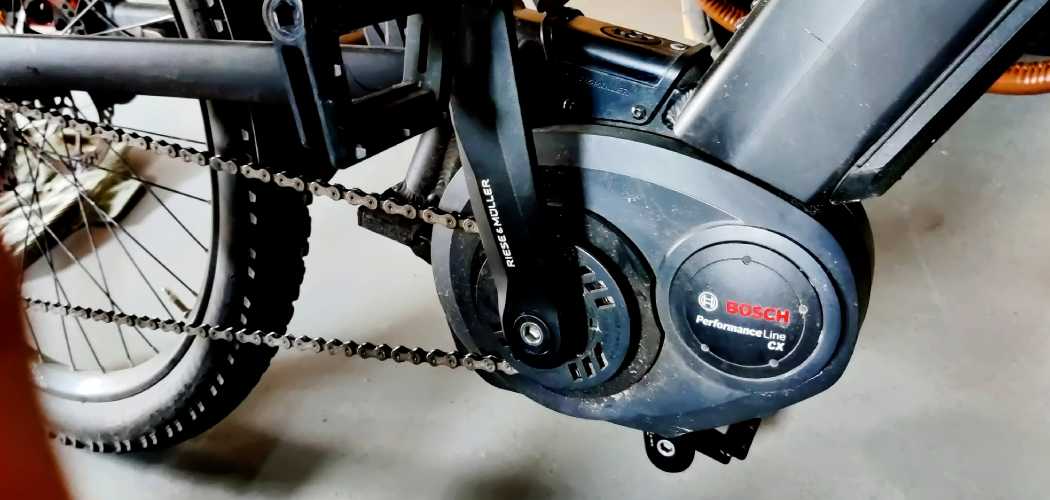
Display, Modes, and Software
These electric components are not simple mechanical parts. They are intelligent parts that interact perfectly with each other based on a lot of sensors. The battery and the motor are the main actors. The software also plays a big role. It calculates how much power is needed when you assist. Each brand has its own sensors and software, its own control, and layout of bike modes. This also plays a role.
2. Gear System: Derailleur vs Automatic Hub
How you ride an electric bike also depends on the gear system. Are you still riding with an old derailleur where you have to change gears yourself, or do you opt for a new automatic hub gear system that makes your life easier?
Here you still work with a lever to indicate whether you want more or less pedal speed, although there are also models that do this completely automatically. Remember that a derailleur is a slightly outdated technology. They require more maintenance and have few advantages, except that they are cheaper.
In the near future, we see the old cable derailleur disappearing to make way for Bluetooth derailleurs or automatic hub gear systems. Compare it to the gears of a car; it seems like something you want, but once you drive automatically, it’s just as nice.
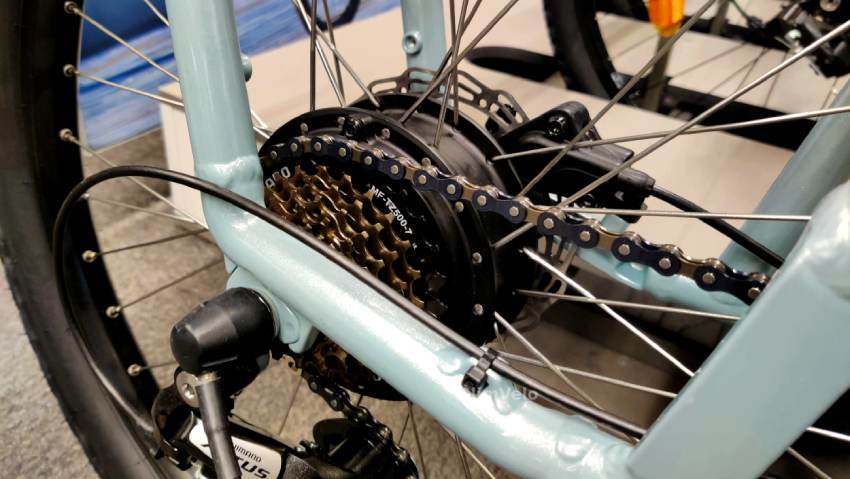
3. The Battery
We’ve already touched on the importance of the motor for your journey, but the choice of battery is also crucial. The battery is an expensive component, and often costs are cut here to reduce the price.
You have batteries with 300 Watt, these are limited and offer only 20 to 35 km autonomy, depending on their age and storage capacity.
A battery of around 500 kW is quite standard, with which you can travel 50 to 70 km, of course also depending on the chosen electric assistance. Nowadays, there are also electric bikes for really long distances with batteries up to 1250 kW. It’s also interesting that Bosch, with their renewed 625 and 750 kW PowerTube, immediately offers more battery capacity than other brands, such as Shimano or Yamaha.
How long a battery lasts exactly depends on several factors. In addition to the motor mode, whether uphill or downhill, or the age of the battery, for example, also play a role.
Below are some factors to consider when thinking about which battery you want on your future electric bike.
Charging Capacity:
The capacity of a battery is expressed in Watt-hours (Wh) and indicates how much energy the battery can store. The higher the capacity, the longer you can ride before you need to recharge the battery. Keep in mind that a battery weighs something. Sometimes you can also choose an extra battery.
Battery Weight:
The battery, together with the motor, is the heaviest part of an electric bike, so it’s important to look at the weight of the battery. An extra battery can provide more autonomy, but is it necessary?
Charging Time:
The charging time can vary depending on the brand and the charging system. Some batteries can be charged within a few hours. For example, Bosch has a fast-charger function. While other batteries (usually house brands) take longer.
Removable Battery:
Some bikes allow you to simply remove the battery and charge it indoors. Others are integrated into the frame and must be charged with a power cable. Of course, there are also models where both options are possible.
Lifespan:
The lifespan also differs depending on the quality, and whether you know how to maintain the battery. Some batteries last longer than others, and it’s important to know how long you expect the battery to last before you need to replace it.
Warranty:
Always look at the warranty offered on the battery and what it covers. In Belgium, you normally have a minimum of two years warranty. Although manufacturers sometimes refuse this.
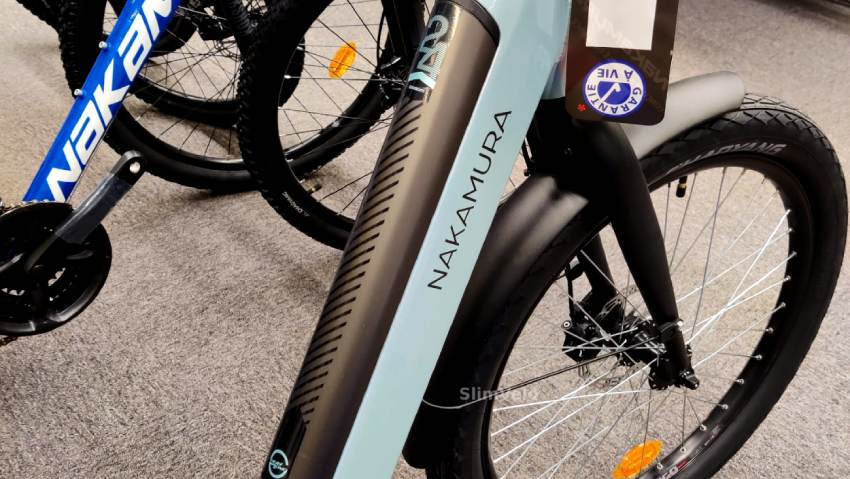
4. Riding Comfort
Alright, now that we understand that power is important in an electric bike, it needs to push or pull you forward, riding comfort is also something we attach a lot of importance to.
Design, Frame, and Size
A first important point is the design of the bike. Here, you look at the material choice and stiffness of the frame and whether it suits you as a user. Also, the length or height of the frame is important if you are a small or large person. But the shape can also play a role in how you feel about the design.
All of this plays a role but remains a personal choice that we cannot delve too deeply into. Just choose a model, a frame, size that suits you, and adjust the saddle and handlebars in a way that feels comfortable for you.
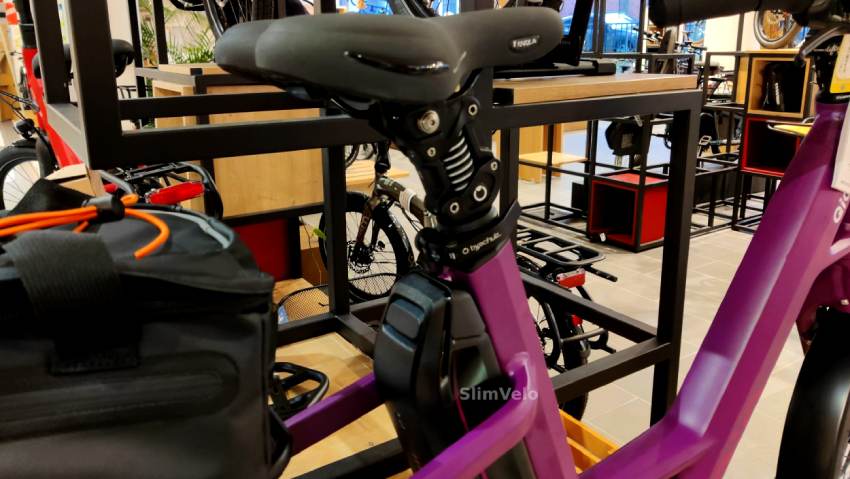
Riding Position and Sitting Posture
Next, the sitting posture. Here, we usually choose between a sporty design or an upright riding position. A riding position where you sit more upright.
This upright posture is especially attractive for long distances or people who prioritize comfort while cycling. By sitting upright, you have a better view of the road around you and can react better.
A sporty riding position, on the other hand, is much cooler and more appealing to people who prefer speed. In this position, you can also apply more power during rides where you have to climb a lot or when you have to pedal a lot.
Suspension; Front and Rear, Handlebars, and Saddle
In addition to the design and sitting position, suspension also plays a major role in riding comfort. There are different types of suspension available. Suspension on the frame is one of the most expensive types of bike suspension.
Additionally, you can opt for suspension on the front fork. All useful if you take unpaved paths or if you know Belgian roads with many potholes, cobblestones, bumps, tram rails, or other obstacles on the road.
These two types of suspension are a choice of the manufacturer and usually increase the price of the bike.
Handlebar Stem and Saddle Post Suspension
You can’t always adjust a bike; you buy what they make. However, you can improve your comfort. The right fitting and posture on your bike are the first steps. An ergonomic position is everything.
Additionally, you have extra suspension options such as the popular saddle post suspension and the often forgotten handlebar stem suspension. The first one absorbs the weight on the saddle, the second one on the handlebars. Because the saddle bears more weight, it is often looked at the most. It also has a lot of influence on the lower back. Good saddle post suspension ensures that you don’t feel shocks, but also that you don’t constantly bounce up and down.
Handlebar stem suspension is used to absorb shocks on the front wheel. You feel these the most in your arms, with the risk of slipping off the handlebars. Good handlebar stem suspension shouldn’t be felt much; it feels natural. If your handlebars bounce up and down, then it’s not adjusted properly.
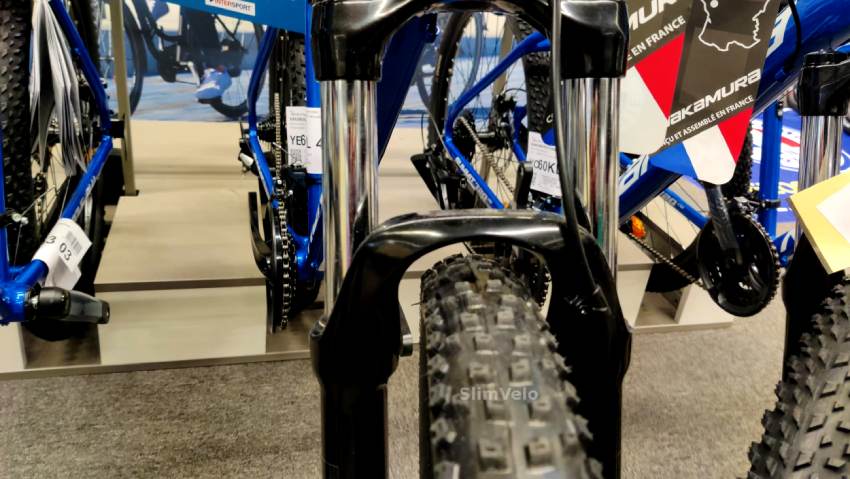
Tires and Tire Pressure
Tires also play a role in riding comfort. They provide grip and control but also influence maneuverability and speed.
Choose tires that are adapted to the type of terrain you ride on most often. For forest trails and dirt roads, these are mountain bike tires, and for flat surfaces, these are smoother tires that allow you to achieve higher speeds.
The size of the tires is less important. Often, larger tires are sought for more stability, but bikes with small tires also have advantages such as more stability due to the lower center of gravity and greater maneuverability due to the smaller contact area with the ground.
If no suspension is available on the bike, you can still provide yourself with some shock-absorbing features by adjusting the tire pressure.
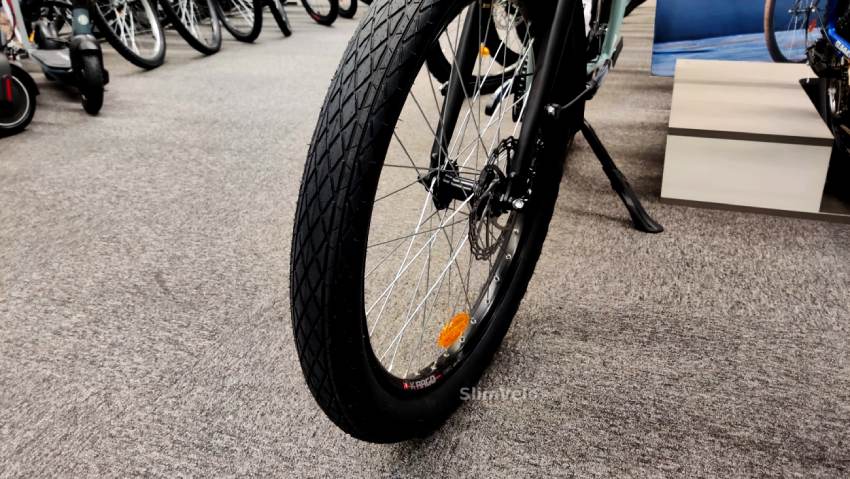
4. Weight of the Electric Bike
An electric bike is heavier than a regular bike due to the battery and the motor. The extra weight can vary from a few kilograms to more than ten kilograms, depending on the model and the battery.
Your intended use also plays an important role here. Do you want an electric hybrid bike that you can also ride without electric assistance? Or are you opting for a cargo bike type where you will only cycle with electric assistance? The former is light, the latter heavy.
When choosing an electric bike, it is important to consider the weight of the bike. Besides the route, there are other forms of use where weight can be a problem. A heavy bike is difficult to lift. Think about placing it in a bike rack, lifting it upstairs to your apartment, or onto the train for commuting.
There are also advantages to a heavier electric bike. The extra weight can provide more stability on the road and smoother handling. Especially with cargo bikes and speed pedelecs, this is an advantage.
Additionally, heavier bikes usually have a sturdier frame and a larger load capacity. They are better suited for transporting heavy loads or pulling trailers for the bike.
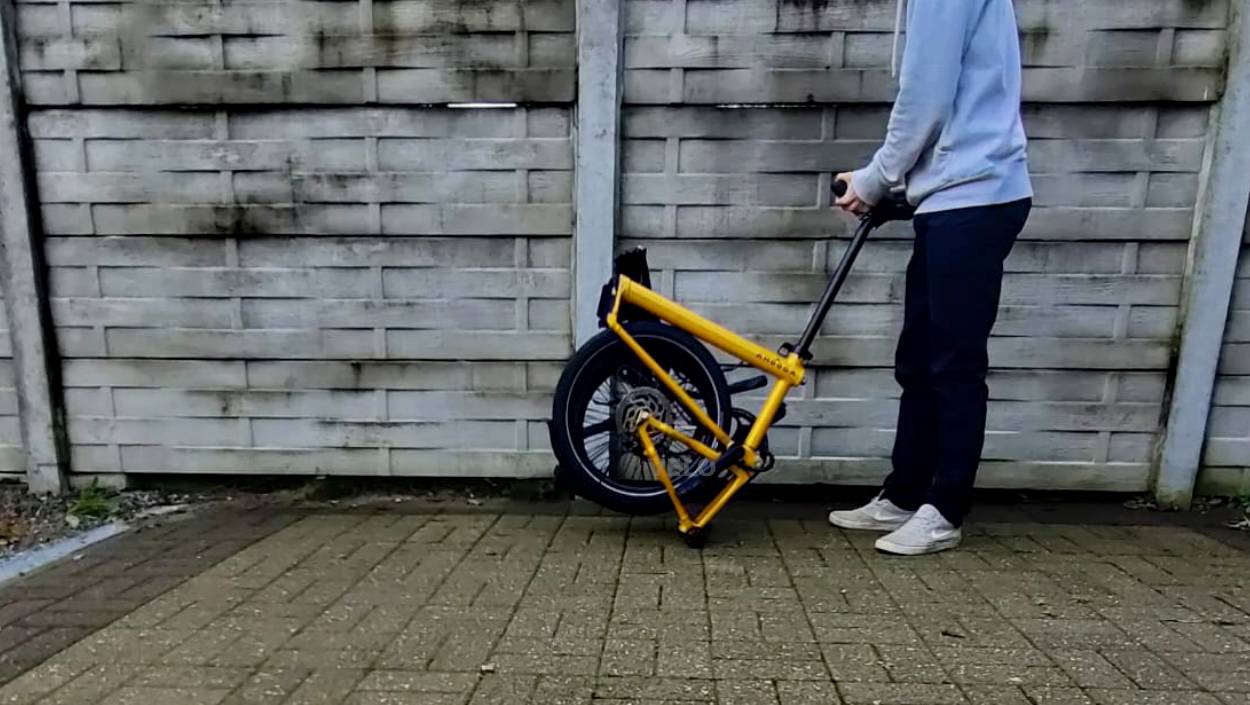
- A regular electric city bike, aiming for around 20 kilograms or lower if possible.
- An electric folding bike. Look for the lowest weight possible, especially if you intend to lift it for tram, bus, and train travel.
- An electric bike for elderly people. Opt for a slightly lower weight, making it easy to keep upright and allowing for easy pedaling assistance.
- An electric road bike. Weight plays a huge role here because every kilogram uphill requires extra effort for the rider. Choose a rear-wheel motor to keep the weight as low as possible, as well as a small battery mainly assisting when you encounter a hill you can’t manage on your own.
- Electric mountain bikes. The same rule applies here, although it’s less critical. Opt for a lightweight but still sufficiently spec’d e-mountain bike.
- Electric cargo bikes. These bikes are very heavy but have good carrying capacity and are very powerful to maintain their speed. Here, you easily go towards 50 to 70 kilograms.
- Speed pedelecs. We’ll explore these in a separate buying guide for speed pedelecs, but look for models between 25 and 35 kilograms. At high speeds, you prefer more weight, but at slow speeds or while walking, you still want a lighter model that can’t tip over too easily.
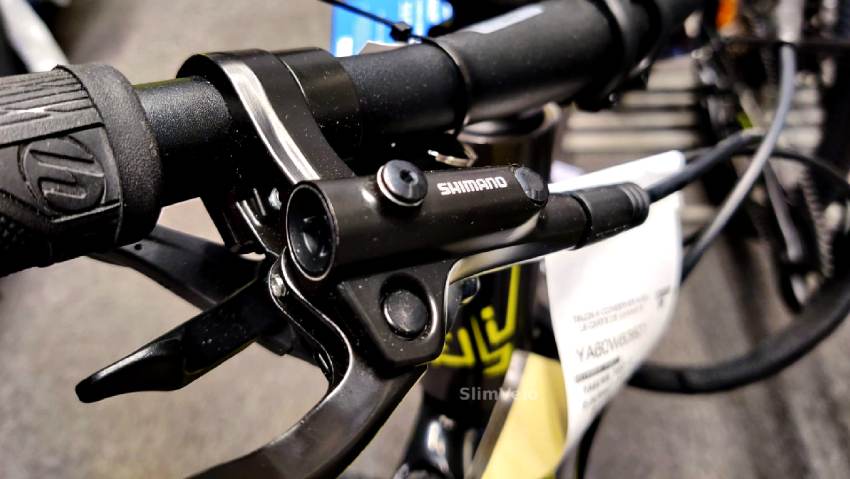
5. Brakes and other remaining elements
Powerful brakes are important on any vehicle. The brakes must be properly adjusted to bring the total weight to a standstill within a short period.
Brakes on an electric bike are more powerful than those on a regular bike. This is because an electric bike is typically heavier than a regular bike. This extra weight can lead to higher speeds (especially downhill) and therefore requires strong braking power.
For an electric bike, look for brakes from a reliable brand. This could be Shimano, but Tektro or Magura also make excellent brakes. Additionally, it’s best to consider the diameter of the disc. The larger the disc, the more braking power or more options for slowing down.
You don’t necessarily need extra powerful brakes, except for a speed pedelec, where we recommend at least 4 pistons. Also, ABS is starting to be applied, so we see elements from the automotive sector alongside the materials used.
Our advice to conclude is: always test the bike you want to buy, so you know exactly what you’re getting when you order it.
